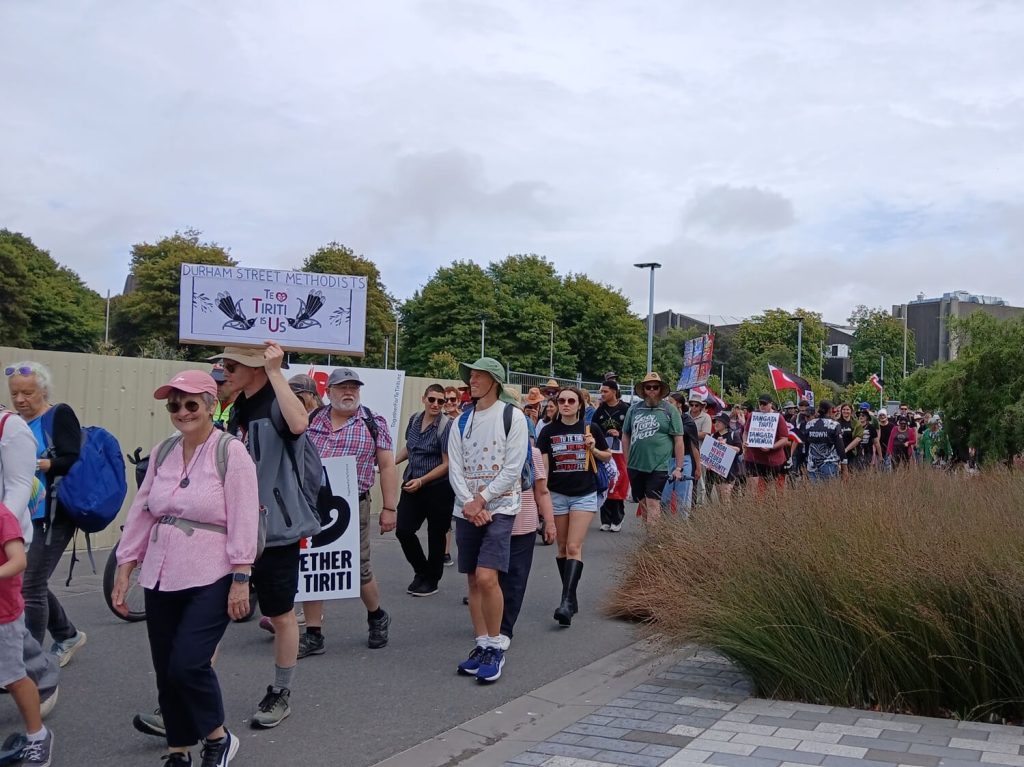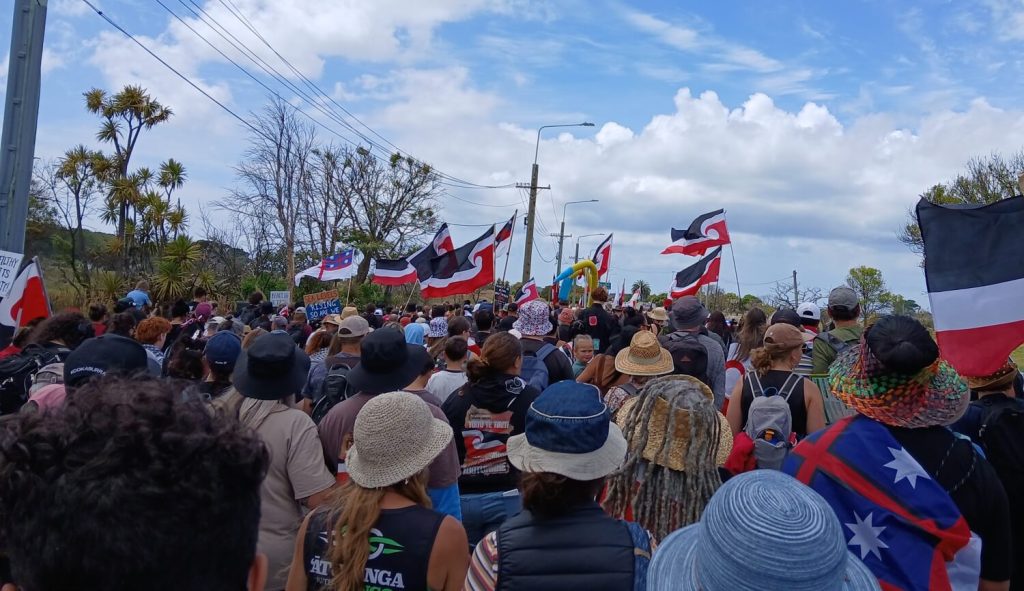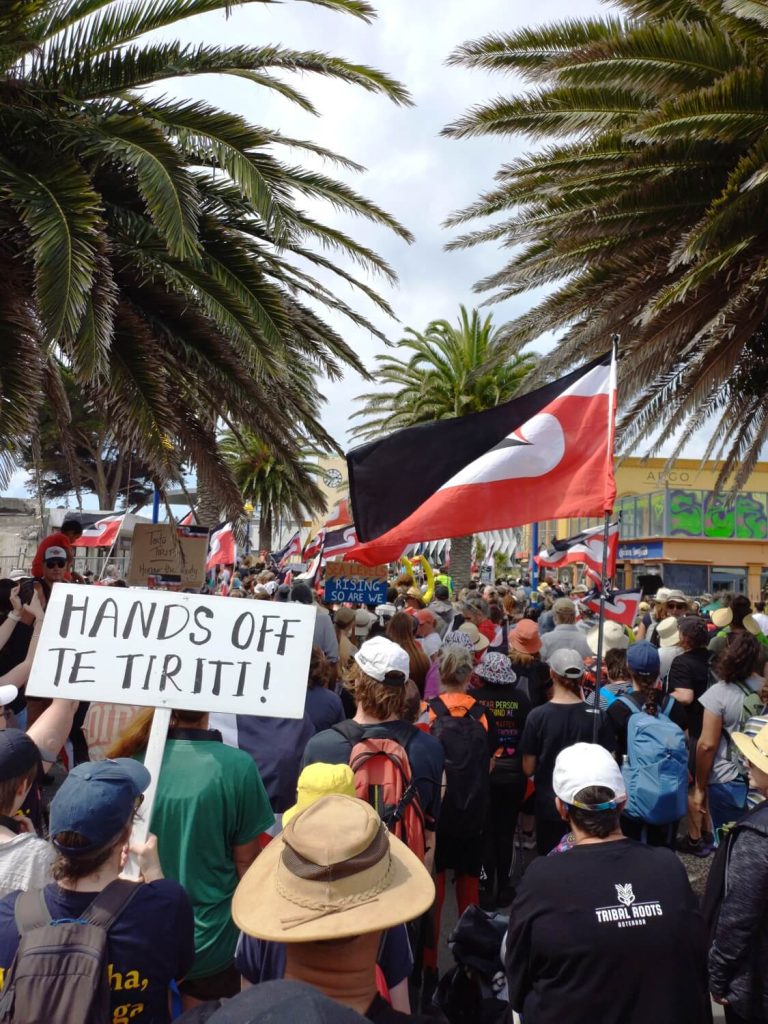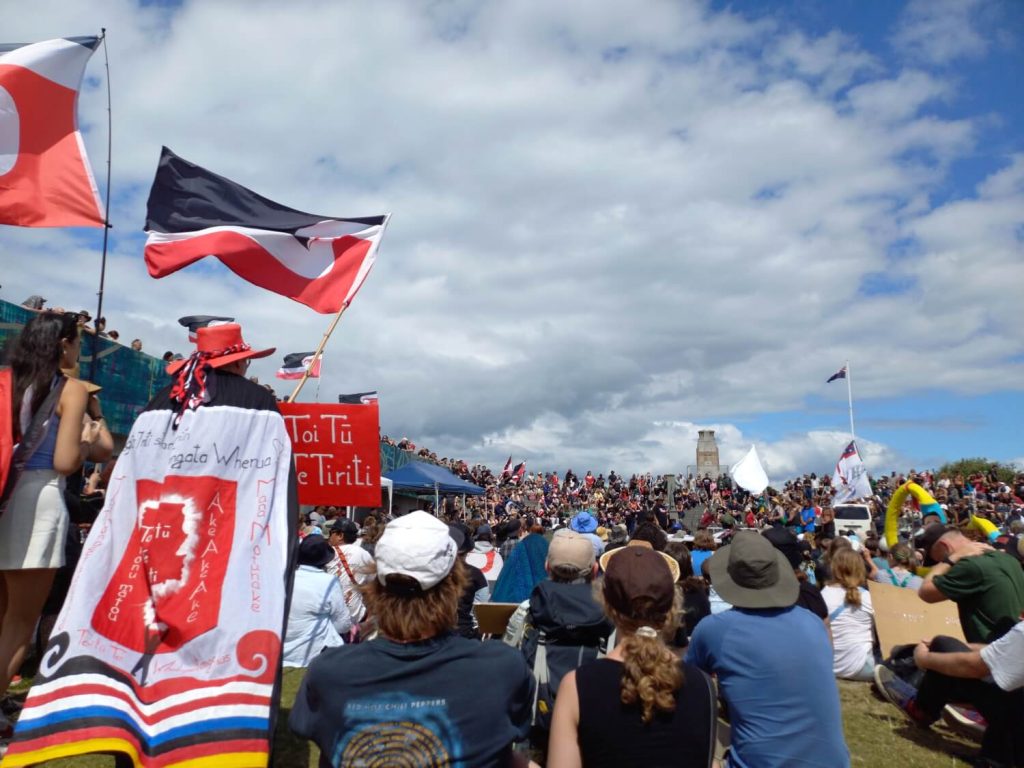A contingent of Durham Street members joined a hīkoi on Waitangi Day to protest against the Treaty Principles Bill which is currently before Parliament’s Justice Committee. Below are a few pictures from our march from Victoria Square to New Brighton.
As members of the Methodist Church of New Zealand – Te Hāhi Weteriana o Aotearoa we feel we have a special responsibility to uphold Te Tiriti o Waitangi.
The original proponents of a treaty were two key men in Britain’s Colonial Office, Lord Glenelg and Sir James Stephen. Both were evangelical Christians whose fathers had been MPs in Wilberforce’s group that had ended the slave trade. Both also had connections to the Anglican Church Missionary Society (CMS) which had sent Rev Marsden and other missionaries to New Zealand.
They initially opposed colonisation and wanted to see an independent Māori nation, but eventually dispatched Lieutenant-Governor Captain William Hobson with instructions to seek Crown sovereignty on the basis of the ”free and intelligent consent” of Māori and to ensure their land and political rights were protected.
As well as Anglican missionaries, Wesleyan missionaries – such as John Hobbs, Samuel Ironside, and John Warren – took an active role in getting Te Tiriti signed. They envisaged te Tiriti as a way of protecting the rights of Māori, and of protecting their land, forests, and fisheries.
In 1840, the Methodist Mission at Māngungu in the Hokianga hosted a signing event at which sixty-four rangatira added their signatures to Te Tiriti. This was the largest number to sign at a single event. The involvement of John Hobbs as interpreter was influential and, while many Māori had considerable reservations about signing, some were persuaded when they sought the view of the missionaries.
Unfortunately, Te Tiriti has not always been honoured and the Crown has not always protected tangata whenua (indigenous) rights. In the years immediately following Te Tiriti being signed, missionaries like John Whitely and Thomas Buddle were also actively involved in represent Māori interests in land, and worked hard to get the letter and the spirit (principles) of te Tiriti adhered to in the face of Crown breaches and settler pressures.
The Methodist Church therefore has a special responsibility as a result to honour the faith the signatories placed in our missionary forebears and today continues to honour Te Tiriti o Waitangi as the founding document of our nation. In 1984 the Methodist Church committed itself to a bi-cultural journey, which is based on power-sharing and the foundation of Te Tititi o Waitangi.




